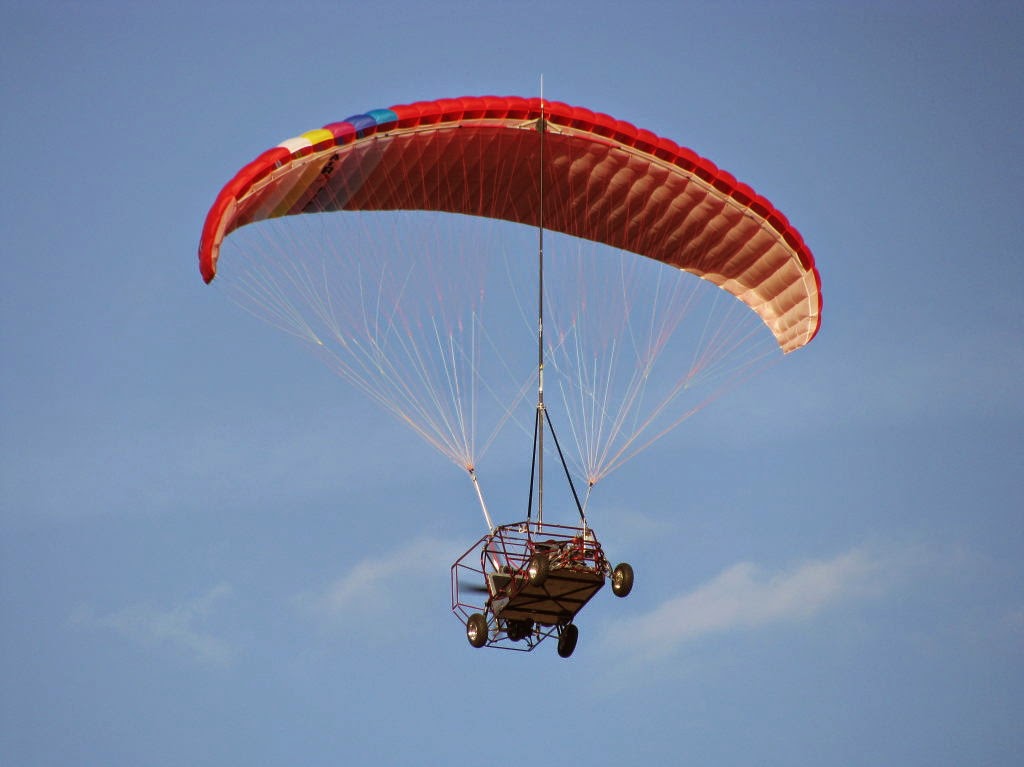In 2012, the Maverick was accepted by the United States FAA to operate as an Experimental homebuilt, S-LSA, or E-LSA. The 1100-pound ‘Maverick’ vehicle is powered by a 128 hp (95 kW) engine that can also drive a five-bladed pusher propeller.
Hopefully in 2016 a couple of models will be licensed for sport flying and will be permitted to be sold completely assembled.
So the future you wanted and were promised is here but you have to have (or will have to have) at least about $80,000, put some of it together yourself and get a flying license. You can have the future of the flying car but you have to want it really bad.
A roadable aircraft (also referred to as a flying car) is a hybrid vehicle that combines the flying capability of an aircraft with the option of being driven as an automobile on the ground.
Most roadable aircraft fall into one of two styles; integrated (all components can be carried in the vehicle, or on a trailer attached to the vehicle), or modular (some aeronautical sections are left at the airport while the vehicle is driven).
In the U.S. the Defense Advanced Research Projects Agency (DARPA) has shown an interest in the concept with a sixty five million dollar program called Transformer
Which roadable cars are flying ?
A number of companies are developing vehicles, although few have demonstrated a full-sized vehicle capable of free flight.
The Parajet Skycar utilises a paramotor for propulsion and a parafoil for lift. The main body consists of a modified dune buggy. It has a top speed of 80 mph (130 km/h) and a maximum range of 180 miles (290 km) in flight. On the ground it has a top speed of 112 mph (180 km/h) and a maximum range of 249 miles (401 km). Parajet flew and drove its prototype from London to Timbuktu in January 2009.
The Terrafugia Transition is under development by a private company founded by MIT graduates. It is a roadable aircraft that the company describes as a “Personal Air Vehicle”. The aircraft can fold its wings in 30 seconds and drive the front wheels, enabling it to operate as a traditional road vehicle and as a general aviation aeroplane. The company planned to release its Transition “Personal Air Vehicle” to customers in late 2011. An operational prototype was displayed at Oshkosh in 2008 and its first flight occurred on 2009-03-05. Owners will drive the car from their garage to an airport where they will then be able to fly within a range of 500 mi (800 km). It will carry two people plus luggage and its Rotax 912S engine operates on premium unleaded gas. It was approved by the FAA in June 2010, and its anticipated base purchase price is $279,000. It still needs compliance certification.
By March 2014, the design of the third, updated prototype had progressed to finalization of the major structural members and a statement to investors said that it would be used in final compliance testing for certification before the first customer delivery which was then estimated to take at least another 18 months and occur “in 2015”.
By April 2014, 12 two-person test flights had taken place; this was the first time that anyone other than Terrafugia’s chief test pilot had flown the Transition. As of 22 August 2014, first customer delivery was hoped for in about 18 months “in the second quarter of 2016
Super Sky Cycle is an American homebuilt roadable gyroplane designed and manufactured by The Butterfly Aircraft LLC. It is a registered motorcycle.
PAL-V ONE is a hybrid of a gyrocopter with a leaning 3-wheel motorcycle. It has two seats and a 160 kW flight certified gasoline engine. It has a top speed of 180 km/h (112 mph) on land and in air, and weighs 910 kg max.
The Plane Driven PD-1 Roadable Glastar is a modification to the Glastar Sportsman GS-2 to make a practical roadable aircraft. The approach is novel in that it uses a mostly stock aircraft with a modified landing gear “pod” that carries the engine for road propulsion. The wings fold along the side, and the main landing gear and engine pod slide aft in driving configuration to compensate for the rearward center of gravity with the wings folded, and provide additional stability for road travel.
The Aeromobil 2.5 has folding wings and a Rotax 912 engine. It can travel at 200 kilometres per hour (124 mph) with a range of 690 kilometres (430 mi), and flew for the first time in 2013
If you liked this article, please give it a quick review on ycombinator or StumbleUpon. Thanks

Brian Wang is a Futurist Thought Leader and a popular Science blogger with 1 million readers per month. His blog Nextbigfuture.com is ranked #1 Science News Blog. It covers many disruptive technology and trends including Space, Robotics, Artificial Intelligence, Medicine, Anti-aging Biotechnology, and Nanotechnology.
Known for identifying cutting edge technologies, he is currently a Co-Founder of a startup and fundraiser for high potential early-stage companies. He is the Head of Research for Allocations for deep technology investments and an Angel Investor at Space Angels.
A frequent speaker at corporations, he has been a TEDx speaker, a Singularity University speaker and guest at numerous interviews for radio and podcasts. He is open to public speaking and advising engagements.







